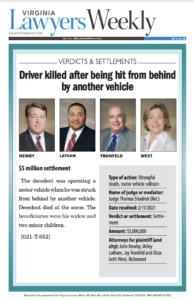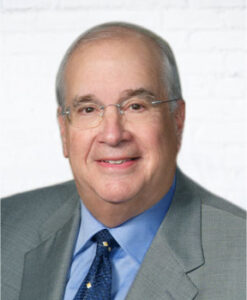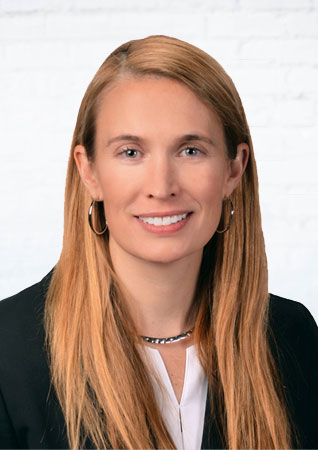Richmond Car Accident Lawyers Fighting to Win Maximum Compensation
If you’ve been injured in a car accident in Richmond, you deserve representation from attorneys who understand Virginia’s complex laws and local court systems. At Tronfeld, West & Durrett, our dedicated Richmond car accident lawyers have a proven track record of securing top compensation for accident victims. From navigating negotiations with tough insurance companies to fighting aggressively in court, we focus relentlessly on maximizing your recovery. Let our experienced legal team handle the stress, so you can focus on your health and getting your life back on track. We’re here to help Richmond residents win—and we don’t stop until we deliver results.
For answers to your questions about a car accident in Richmond, call:800-321-6741
Virginia Car Accident Laws
One thing that is important to remember is that Virginia is a “fault” state when it comes to determining who is liable for a car accident. That means if you are injured as the result of an auto accident, you have several options on how to seek compensation:
- You can choose to file a claim with your medical payments coverage policy simply. However, medical payment coverage is optional in Virginia and you may not have it on your policy. In addition, medical payment coverage is usually very limited and may not be enough to cover your medical bills.
- You can file a third-party auto insurance claim with the insurance agency of the driver who was at fault in your accident
- If the fault is not clear, or settlement negotiations have not met your expectations, you can choose to take the case to court
This is different from “no-fault” states which only offer car accident victims a predetermined payment from their insurance company regardless of who was at fault.
This ability to determine fault allows you to receive fuller and greater compensation for your losses.
Another key point about car accidents in Virginia is the state-mandated statute of limitations, which sets a deadline for filing injury claims.
If you are the victim of a car accident, the state declares that you only have two years to file a personal injury claim, and only five years to file a property damage claim. These periods may be longer for minors under 18 years old and persons with a disability. If you or a loved one has been injured in a car accident, you should contact a Richmond car accident attorney immediately to determine the applicable statute of limitations.
Our Case Results For Car Accident Victims In Virginia
Our case results for car accident victims in Virginia highlight our dedication to obtaining justice and fair compensation for those injured in motor vehicle accidents.

- A $1 million settlement was secured for a woman who suffered a heel injury in a T-bone collision caused by a driver running a stop sign.
- A $4.5 million settlement for a man who was hit by a negligent driver while stopped at a red light in Chesterfield County.
- A $6.5 million settlement for a man who was seriously injured in an accident on I-95 in Southside Virginia.
- A $5 million settlement was secured in a car accident case where the decedent was struck from behind by another vehicle and tragically died at the scene, leaving behind his widow and two minor children.
If you have suffered any injury as a result of a car accident, make sure you get the right representation.
We are not just your typical law firm. We are local attorneys with strong ties to Richmond, Virginia. And we are dedicated to serving our community and those in it and the surrounding areas.
So do not let a serious accident turn your life upside down. Call Tronfeld West & Durrett and get a local team of experienced car accident attorneys in Richmond, VA who will work to get you the highest settlement you deserve.
Click to contact us today
Meet Our Car Accident Lawyers
Jay Tronfeld

Jay Tronfeld, the founding shareholder of our firm, has been a dedicated advocate for personal injury and wrongful death victims since 1972. With over 50 years of experience, he has successfully represented thousands of clients across Virginia, from Richmond to Northern Virginia, and in both Federal and State Courts. His expertise spans a wide range of cases, including car accidents, tractor-trailer accidents, medical malpractice, and defective products.
Recognized as a member of the Top 100 Trial Lawyers and Super Lawyers, Mr. Tronfeld has achieved multimillion-dollar verdicts and settlements throughout his career. He has also been an invited speaker at various legal education programs, sharing his knowledge of personal injury law with fellow attorneys. Outside of work, he enjoys spending time with his wife, children, grandchildren, and their dogs.
Jay Tronfeld’s extensive experience and dedication make him a trusted advocate for those injured in car accidents in Richmond and beyond.
Elizabeth West

Elizabeth West, a graduate of the University of Richmond’s T.C. Williams School of Law, has been a dedicated member of the Virginia State Bar since 1991. With over three decades of legal experience, she has built a reputation for excellence in personal injury law and is a proud member of the Million Dollar Advocates Forum.
Recognized for her exceptional skills, Elizabeth has been named a Super Lawyer by the Virginia Super Lawyers Magazine every year from 2019 to 2025. She is also a member of the prestigious National Trial Lawyers: Top 100 Trial Lawyers. During law school, she demonstrated her advocacy talents as a member of the Moot Court Board, competing in appellate argument competitions. Throughout her career, she has shared her expertise by lecturing on trial advocacy to legal organizations across Virginia.
Elizabeth West’s commitment to justice and her proven track record make her a trusted advocate for car accident victims in Virginia.
Complete a Free Case Evaluation form now
Richmond Car Accident Statistics
Driving in Richmond can be very dangerous with thousands of vehicle crashes happening every year.
- In 2022, Richmond had 5,721 automobile accidents with 34 fatalities and 2,719 injuries. All these statistics, per the Virginia Dept of Motor Vehicles, have increased in incidents since the last time we reviewed the report in 2017. With 158,597 licensed drivers in Richmond, there was a 0.21 death rate per 1000 drivers in Richmond (compared to a 0.15 death rate five years ago).
- These accidents may involve two passenger vehicles; more than one passenger vehicle (such as pile-ups and crashes at intersections); a passenger vehicle and a commercial truck such as a tractor-trailer; a car and another vehicle such as a bus, motorcycle, tractor, or farm equipment; a car and a pedestrian crossing a street; a car and a bicyclist, either on the road or sidewalk; a car and an animal, such as a deer or cow; or a car and a fixed object or structure such as a light pole or house.
- Many of Richmond’s accidents occur on Chippenham Parkway, Interstate 64, Interstate 95, Interstate 85, Interstate 264, Interstate 195, Interstate 295, Broad Street, Virginia State Route 288, Powhite Parkway, and Hull Street.
- The most dangerous intersections in Richmond include the intersection of Midlothian Turnpike and Turner Road, Staples Mill Road and Dickens Road, Hull Street Road, and Hey Road, and Cedar Fork Road and Creighton Road.
What Are The Causes Of Richmond Car Accidents?

Richmond drivers must use ordinary care by keeping a proper lookout while driving, keeping the vehicle under control at all times, obeying all traffic signs and rules of the road, and driving at reasonable speeds under the existing conditions. Drivers who fail to meet these requirements and cause an automobile accident that injures others can be held financially responsible for any damages.
Anytime there is a car collision, serious injuries or death can happen. Many car accidents happen because of negligent driving. Common causes of car accidents in Richmond include distracted driving, speeding, reckless driving, running red lights or stop signs, driving under the influence of drugs or alcohol, driving in poor weather conditions, falling asleep at the wheel, or driving at night.
Distracted Driving
Distracted driving is one of the most common reasons that contribute to causing car accidents. Indeed, according to the Drive Smart Virginia highway safety organization, distracted driving contributes to almost 80 percent of all car crashes each year. Examples of distracted driving that may cause an accident are texting, using a cell phone, eating, drinking, smoking, personal grooming, adjusting the car radio, or using GPS.
Another frequent example of distracted driving is when drivers are distracted by conditions on the road, such as to look at an accident scene, police activity, or other distractions that take their eyes away from the road in front of them.
Distracted drivers are still responsible for any damages they may have caused to you or your property.
Speeding
Driving over the speed limit causes hundreds of car accidents every year. Speeding is the leading factor in accidents across the United States, according to the National Highway Traffic Safety Administration, with almost 55 percent of crashes in the country being caused by speeding drivers. In 2017, 775 car crashes in Richmond were caused by speeding, including 2 fatalities and 392 injuries.
If you were hit by a driver speeding over the limit or too fast for the weather conditions at the time of the accident, you may be able to recover your damages, with the help of the experienced Richmond car accident attorneys at Tronfeld, West, and Durrett.
Reckless Driving
Reckless driving occurs when a driver is operating a vehicle in such a manner or at high speed such that the driver endangers other people.
Examples of reckless driving include driving a certain amount over the speed limit, racing, road rage, running red lights or stop signs, failing to yield the right of way, or failing to give proper traffic signals when turning.
If you have been involved in a car accident as the result of a reckless driver, the experienced Richmond car accident lawyers at Tronfeld, West, and Durrett can make sure that you are able to recover the damages suffered because of the other driver’s reckless driving.
Running Red Lights
Almost half of the fatal car crashes at intersections across the country are caused by a driver who ran a red light. Running a red light can cause serious injuries, property destruction, and death.
Running Stop Signs
Running a stop sign often leads to the same dangerous consequences as running a red light. Drivers who run stop signs are also usually either distracted and not paying attention to the presence of a stop sign, or the driver is in such a rush to get to somewhere that he or she decides to run the stop sign and fails to yield the right of way to another driver.
If another driver ran a stop sign and hit you, you must prove that the driver was at fault, using such evidence as photographs, witness testimony, or police statements. Any nearby security cameras may also be able to provide useful footage.
Driving Under The Influence Of Drugs And Drinking
In 2017, there were 244 automobile accidents in Richmond that were alcohol-related. These car crashes led to 169 injuries and 7 fatalities. For the state of Virginia itself, about 32% of all traffic fatalities result from alcohol-related collisions.
A driver does not have to be over the legal limit to still be driving under the influence and may also be under the influence of more than just alcohol or illegal drugs. Driving while under the influence of over-the-counter or prescription medication is also illegal.
If you have been the victim of a DUI driver, you should speak to one of the Richmond car accident attorneys at Tronfeld, West, and Durrett as soon as possible because you may be entitled to receive compensation for your medical bills, rehabilitation bills, medications, and loss of future earnings as well as punitive damages for the other driver’s willful and wanton behavior of driving under the influence when the collision occurred.
Poor Weather Conditions
Many car accidents are caused by drivers driving too fast for road or weather conditions. While they may be obeyed the posted speed limits, drivers may need to drive slower if the weather or road conditions require it, such as during storms, when roads are icy or slick, or if visibility is limited such as caused by fog.
Poor weather conditions that can create hazardous driving conditions include:
- Rain can cause slippery road conditions as well as create low-visibility conditions while rain is coming down or as steam comes up off the hot, wet pavement.
- When driving during winter weather conditions, snow can cause hazardous and slippery road conditions during the winter.
- Ice can also cause very slippery road conditions, as well as often being harder to spot than snow on the road. Bridges often ice quicker than the roads, and if you hit a patch of ice on the road, it can cause you to lose control of your vehicle.
Falling Asleep At The Wheel
When drivers operate a vehicle while sleepy, their fatigue can impair their reflexes, causing them to not react quickly enough to driving conditions, to fail to observe traffic rules and regulations or to fall asleep at the wheel and cause a car crash or other accident.
Drivers that are the most likely to fall asleep at the wheel and cause an automobile accident include business travelers, truck and other commercial drivers, employees working night shifts, or drivers who are taking certain prescription medications.
Driving At Night
In general, more accidents occur during the night hours than during the daytime, with Friday and Saturday nights being the deadliest times to be on the road across the country. In addition to the additional dangers that driving at night poses such as decreased visibility, the danger of other drivers driving under the influence of alcohol greatly increases. Across the nation, two out of every three accidents during Friday or Saturday nights involve a driver driving under the influence of alcohol.
While more accidents and traffic fatalities occur at night, there is actually about sixty percent less traffic on the road at night. Many of the top causes of these traffic accidents that happen while driving at night include drowsiness, cell phone use, driving while alcohol-impaired, or otherwise distracted.
Car Accidents & Insurance In Virginia
Car Accidents With No Insurance
In Virginia, an estimated 10% of drivers do not have auto insurance and are not required to do so if they choose instead to pay a $500 fee instead of purchasing car insurance.
If you are involved in a car accident with an uninsured driver you can either file a claim with your insurance company, generally under any uninsured motorist coverage you may have, or you can personally take the uninsured driver to court for your damages. In addition, you should also make sure that your insurance company does not try to give you too little for your claim, and if you feel that your insurance company is not offering enough to cover your damages, you should consult with an experienced Richmond car accident attorney.
If you have no car insurance and are involved in an accident, you can still recover from the other driver or the driver’s insurance if the other driver is at fault or liable for the accident. However, if you are at fault, you will still be personally liable for any damages, even though in Virginia you can simply pay a yearly Uninsured Motor Vehicle (UMV) fee of $500 instead of purchasing auto insurance.
One of the major pitfalls of Virginia’s opt-out auto insurance laws is that while they allow drivers to pay a small fee instead of carrying full insurance, this leaves many drivers uninsured and can complicate accident claims. If you’re involved in a collision with an uninsured driver who has only paid the $500 fee, recovering damages can be more difficult and time-consuming. Additionally, because uninsured drivers are personally liable for damages, they may lack the financial means to compensate you fully. This law puts insured drivers at risk of facing reduced or delayed compensation, which is why having strong uninsured motorist coverage and consulting with an experienced Richmond car accident attorney is crucial to protecting your rights and maximizing your recovery.
Car Accidents And Insurance Claims
Your car accident attorney may be able to recover these damages from the other driver’s liability insurance coverage, your own uninsured driver’s insurance coverage that is part of your automobile insurance coverage, other relevant insurance policies, as well as from the other driver through a personal injury lawsuit.
Unless a driver pays the $500 fee for not purchasing auto insurance in Virginia, the minimum coverage they should possess is $25,000 for the bodily injury or death of one person, $50,000 for the bodily injury or death of two or more people, and $20,000 for any property damage. If a person chooses to also purchase uninsured motorist or underinsured motorist coverage, the minimum policy limits mirror those for the liability insurance.
In most cases after a car accident, you will recover your damages by filing a claim with the at-fault driver’s insurance company, and that driver’s insurance company should pay for any of your damages, up to the limits of that driver’s insurance policy’s coverage.
If the other driver’s policy coverage is not enough to cover all of your damages, you can file a claim through your own underinsured policy with your insurance company, turn to any other applicable insurance coverage, file a claim against a third party that can be held responsible for the at-fault driver’s actions, such as the person’s employer if the driver was acting on his or her behalf at the time of the accident, or you can try to recover your damages from the driver’s assets.
The Importance Of Proving Negligence In Virginia
The State of Virginia has extremely rigid contributory negligence laws. In Virginia, if a driver is even one percent at fault in an accident, the law bars him from collecting any compensation.
This means that if you were driving a few miles over the speed limit when another driver turned left at an intersection and slammed into you, you could be on the hook for your damages, even though you did not cause the accident. Click here to see The 10 Most Dangerous Intersections in Richmond and Petersburg, Virginia.
That is why it is so crucial that you are able to prove the other driver was totally at fault for the accident. To do this, you will need to collect proper evidence and build a strong case against the negligent party.
You can do this by:
- Documenting all of your injuries and damages to your personal effects
- Taking photos of your injuries, the scene of the accident, and damages to your property
- Gathering the names and contact information of any witnesses
- Securing medical records related to anyone involved in the accident
This can be an arduous task however and can feel overwhelming for someone who was just involved in a serious car accident. This is all the more reason to contact professionals who know how the law works and can do all of the tedious work for you.

What Are The Compensations After A Car Accident?
At Tronfeld West & Durrett, we will stop at nothing to prove fault and ensure you are compensated fairly for your losses. We will work to get you compensation for:
- Your medical bills
- Damage to your vehicle or other personal property
- Insurance deductibles
- Lost wages due to missing work
- Pain and suffering
- Mental anguish
To calculate pain and suffering damages, you typically total your economic damages and multiply them by a variable, which usually ranges from 1.5 to 5. More severe cases are assigned higher variables. For example, if you incurred $100,000 in economic damages and a 1.5 variable is applied, your pain and suffering damages would amount to $150,000.
Do not let your bills and anxiety pile up by hiring a team of inexperienced personal injury lawyers.
Our Richmond car accident lawyers have a proven track record of fighting for injury victims across Virginia. Call Tronfeld West & Durrett today to get the compensation you deserve! – (800)-321-6741
Steps to Take After a Car Accident in Richmond
Knowing what to do after a car accident can protect your health, legal rights, and financial future. Follow these essential steps to ensure you’re taking the right actions:
1. Call 911 Immediately
Always contact emergency services after an accident. Police and EMTs will arrive to assess the situation, document the accident, and provide medical care. Even if the other driver asks you not to involve the police—perhaps due to a lack of insurance or a prior accident history—do not skip this step. A police report is a crucial piece of evidence for your case.
2. Seek Medical Attention Right Away
Even if you feel fine, injuries from car accidents can take hours, days, or even weeks to show symptoms. The adrenaline rush during an accident can mask pain and injury symptoms, so it’s essential to let a medical professional evaluate you immediately.
3. Gather Evidence at the Scene
If you’re physically able:
- Exchange contact and insurance information with the other driver.
- Take clear photos of vehicle damage, road conditions, traffic signs, and any visible injuries.
- Speak to witnesses and collect their contact information if possible.
4. Document Your Experience
Once you’re home and settled, write down every detail you can remember about the accident:
- What happened just before the crash?
- How did the accident occur?
- How did you feel immediately after?
Small details often become critical evidence in building your case.
5. Notify Your Insurance Company
Report the accident to your insurance company promptly. Provide basic details, but avoid giving recorded statements or accepting blame until you’ve spoken with an attorney.
6. Contact an Experienced Richmond Car Accident Attorney
Before speaking further with insurance adjusters, consult a skilled Richmond car accident attorney from Tronfeld West & Durrett. Our legal team will:
- Handle all communication with the at-fault party’s insurance company.
- Ensure you receive the necessary medical care.
- Fight for maximum compensation so you can focus on recovery.
How Long Does A Car Accident Settlement Take?
Every car accident settlement is different. The amount of time your settlement will take will depend on many different things, including whether liability for the accident is clear, the extent of your injuries, how long your recovery is expected to take, and whether you will be able to return to work at some point. While the simplest accidents with fairly minor injuries can settle quickly within six weeks to two months, more complex accidents with more severe injuries can take 3-8 months to settle. If, however, the insurer refuses to settle for a reasonable amount, the case will go to trial, which can take significantly longer than a settlement. It can take time even to get a trial date set, and it is likely to be set for months or even a year. When a case goes to court, you might look at a year to a year and a half to settle.
Common Car Accidents Injuries
Car accidents can result in serious injuries to the body. Although airbags and seat belts have minimized severe injuries, more cars on the roadways, higher speeds, and distracted drivers have increased the number of car accidents. Traumatic brain injuries are the primary injuries sustained by those in car accidents. The brain injury can range from a concussion to a severe TBI with long-term effects. Any time the head strikes a hard surface, the brain can sustain injury. Other common injuries resulting from car accidents include:
- Neck and back injuries—Whiplash is common when one vehicle is struck in the rear by another. Back injuries can result from any type of car accident, ranging from minor pain to severe pain and lack of mobility. When the spinal cord is injured, partial or full paralysis can occur.
- Burns can occur in serious car accidents when the vehicle catches on fire or in any car accident when the skin comes into contact with hot fluids, surfaces, steam, or chemicals. Severe burns can cause long-term physical and emotional pain and trauma.
- Internal injuries can occur in minor or more serious car accidents. Internal organ damage can occur when a car crash forces the body into a hard object, or the body is hit by flying debris. Internal bleeding and internal organ damage require immediate medical attention. Even those wearing a seat belt can sustain internal organ damage from the impact of the seat belt against the body at the time of the collision.
- Fractures and broken bones are extremely common car accident injuries, including broken legs, ribs, wrists, knees, ankles, and arms. Sometimes, a car accident victim will sustain a broken pelvis or ribs. Simple breaks may only require a cast, while more serious breaks or compound fractures may require surgical intervention.
- Facial disfigurement can occur from flying glass that embeds into the face, when the face strikes a hard surface, or when burns occur to the face. Facial injury disfigurement may require multiple surgical procedures and leave the victim with lasting facial scars.
- Amputation of an arm, a leg, fingers, or toes can occur during a car accident. Limb loss can have permanent disabling effects on the victim.
Statute of Limitations for Car Accidents in Richmond
Like every other state, Virginia has a statute of limitations that limits the amount of time you have to file your lawsuit for any injuries suffered as a result of a car accident. Virginia Code section 8.01-243 creates a statute of limitations of two years to file a lawsuit for any injury claims resulting from a car accident. So it’s important to contact our law firm as soon as possible to help you recover expenses for any damages incurred as a result of your accident.
We understand that the aftermath of a car accident can be difficult as you deal with disabling injuries, physical pain, time away from work, and emotional trauma. Your financial situation may also quickly deteriorate as you must deal with medical expenses and time away from work, resulting in your normal bills going unpaid.
Two-Car Accidents FAQs
How long do I have to file a claim for compensation after a two-car accident?
In Virginia, you typically have two years from the date of the accident to file a personal injury claim for compensation (Virginia Code § 8.01-243). It’s crucial to act within this timeframe to preserve your right to seek damages. Failing to file within the statute of limitations can result in losing your right to recover compensation, regardless of the severity of your injuries.
If a drunk driver hits me, can I sue the bar that served the driver?
You can potentially sue a bar that served alcohol to a drunk driver who subsequently injured you in an accident. This type of lawsuit falls under “dram shop” laws, which hold establishments accountable for overserving alcohol to visibly intoxicated individuals.
To successfully pursue a claim against the bar, you must demonstrate several key elements:
- Proof of service: You need to establish that the bar served alcohol to the driver after they were already visibly intoxicated.
- Causation: It must be shown that the intoxication from the bar’s service was a contributing factor to the driver’s impairment at the time of the accident.
- Damages: You must provide evidence of the injuries and damages you sustained as a result of the accident.
- Negligence: The bar’s actions must be deemed negligent, meaning they should have recognized that they were serving an intoxicated individual and refrained from doing so.
While these cases can be challenging to win, they can be crucial for obtaining compensation, especially if the drunk driver lacks sufficient insurance coverage. Consulting with a car accident attorney at Tronfeld West & Durrett can clarify your options and help build a compelling case, if applicable.
What can I do if the other driver leaves the scene of the accident or carries no insurance?
If the other driver leaves the scene (a hit-and-run) or is uninsured, you may still recover compensation through your own uninsured motorist coverage. This type of coverage is designed to protect you in situations where the at-fault driver cannot be identified or is unable to pay for damages. It’s essential to report the accident to the police immediately and seek legal advice to ensure that you take all necessary steps to pursue your claim.
What damages can I claim if I have been injured in a two-car accident caused by the other driver?
If you’ve been injured in a two-car accident caused by another driver, you may be entitled to several types of damages, including:
- Medical expenses: Covers costs related to emergency care, surgeries, ongoing treatment, and rehabilitation.
- Lost wages: Compensation for income lost due to the inability to work, including future earnings if the injury affects your long-term employment.
- Property damage: Costs for repairing or replacing your vehicle and any personal property damaged in the accident.
- Pain and suffering: Compensation for the physical pain and emotional distress caused by the accident.
- Loss of enjoyment of life: If your injuries prevent you from participating in activities you previously enjoyed.
If I was partly at fault for a two-vehicle accident, can I recover damages?
Virginia follows a contributory negligence rule, which is one of the strictest in the nation. Under this rule, if you are found to be even 1% at fault for the accident, you may be barred from recovering any damages. This makes it crucial to work with an experienced attorney who can effectively argue that the other driver was entirely responsible for the collision.
How is fault determined in a two-car accident?
Fault in a two-car accident is determined by examining the evidence, which may include police reports, witness statements, traffic camera footage, and expert testimony. The specifics of the accident, such as traffic violations, road conditions, and driver behavior, are analyzed to establish who was negligent. Our legal team at Tronfeld West & Durrett meticulously investigates each case to ensure that liability is accurately assigned.
If representatives of the other driver’s insurance company contact me, should I talk to them?
It’s generally advisable not to speak with the other driver’s insurance company representatives without consulting your attorney first. Insurance adjusters may attempt to minimize your claim or use your statements against you. At Tronfeld West & Durrett, we handle all communications with insurers on your behalf to protect your interests and maximize your compensation.
How soon after the accident should I see a doctor?
You should see a doctor as soon as possible after the accident, even if you feel your injuries are minor. Some injuries, like whiplash or internal injuries, may not show symptoms immediately but can have serious long-term effects. Prompt medical attention not only ensures your health is protected but also provides crucial documentation for your injury claim.
Is it important to take pictures after an accident involving another vehicle?
Yes, taking pictures after an accident is highly important. Photographs of the accident scene, vehicle damage, road conditions, and any visible injuries serve as vital evidence in proving fault and the extent of damages. These images help substantiate your claim and can be a decisive factor in settlement negotiations or court proceedings.
What should I do if I am involved in an accident caused by another driver?
If you’re involved in an accident caused by another driver, take the following steps:
- Ensure your safety: Move to a safe location if possible and check for injuries.
- Call the police: Report the accident and request an official report, which will be critical in your claim.
- Collect evidence: Gather contact information from witnesses, take photos of the scene, and document any relevant details.
- Seek medical attention: Get checked by a doctor, even if you feel fine.
- Notify your insurance company: Report the accident but avoid making any statements that could be used against you.
- Consult with an attorney: Contact Tronfeld West & Durrett to discuss your case and ensure your rights are protected.
Schedule a Free Consultation With Our Richmond Auto Accident Lawyers
After an accident, you do not want to share your pain and grief with a stranger. You need people who understand what you are going through and are dedicated to serving your best interests — not just their own.
Our attorneys work with you on a personal basis (as we said, we are Virginia-born and raised) and are always available to handle any questions or concerns you have.
Do not let an auto accident wreck your life. At Tronfeld West & Durrett, we also deal with golf cart accidents and ATV accidents. Call the experienced Richmond car accident lawyers at our firm now and let us get you the help and compensation you deserve
We have offices conveniently located in your neighborhood, whether you are in Richmond, Petersburg, Chesterfield, or Mechanicsville. Contact us now locally at 804-358-6741. Not in the Virginia area? Call us toll-free at 800-321-6741.
Richmond Office
4020 West Broad St
Richmond, VA 23230
Phone: 804.358.6741
Toll Free: 800.321.6741
Call or text 800-321-6741 or complete a Free Case Evaluation form








